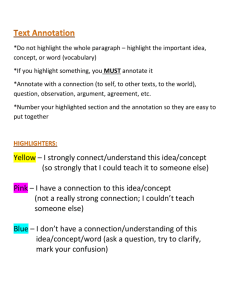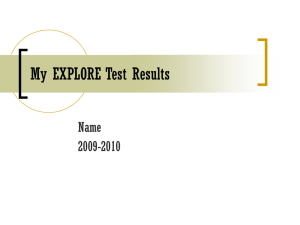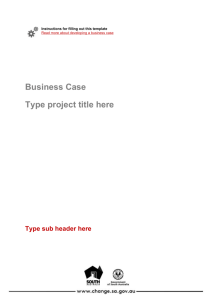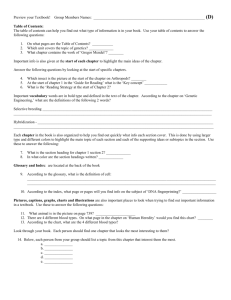Lesson title: Show not tell
advertisement
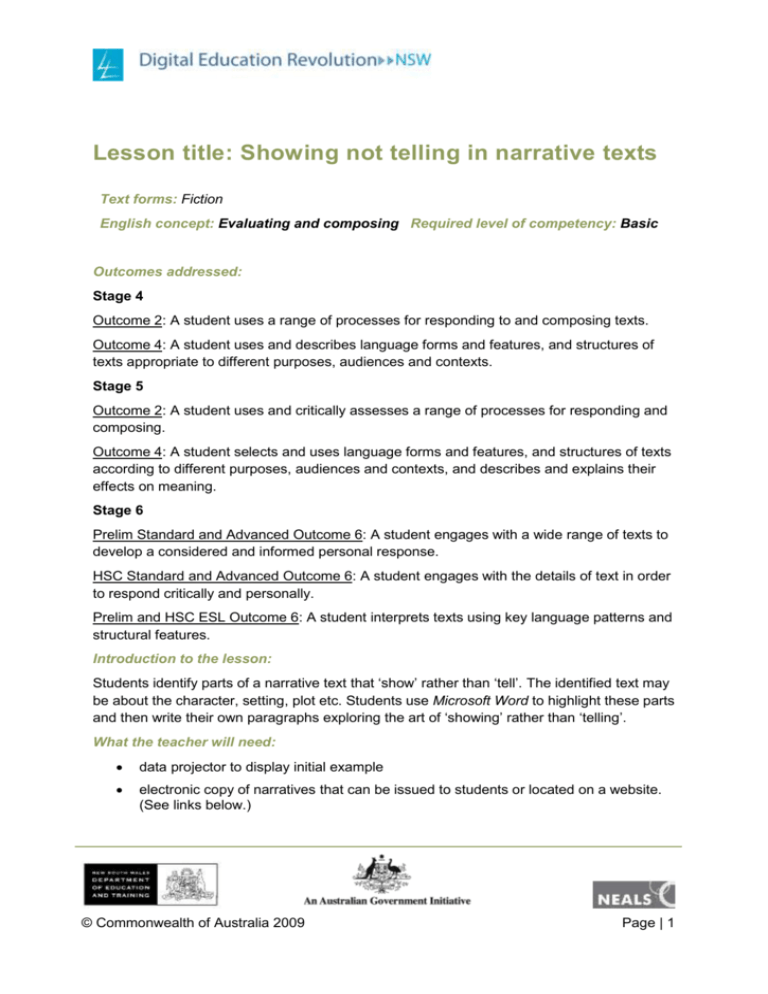
Lesson title: Showing not telling in narrative texts Text forms: Fiction English concept: Evaluating and composing Required level of competency: Basic Outcomes addressed: Stage 4 Outcome 2: A student uses a range of processes for responding to and composing texts. Outcome 4: A student uses and describes language forms and features, and structures of texts appropriate to different purposes, audiences and contexts. Stage 5 Outcome 2: A student uses and critically assesses a range of processes for responding and composing. Outcome 4: A student selects and uses language forms and features, and structures of texts according to different purposes, audiences and contexts, and describes and explains their effects on meaning. Stage 6 Prelim Standard and Advanced Outcome 6: A student engages with a wide range of texts to develop a considered and informed personal response. HSC Standard and Advanced Outcome 6: A student engages with the details of text in order to respond critically and personally. Prelim and HSC ESL Outcome 6: A student interprets texts using key language patterns and structural features. Introduction to the lesson: Students identify parts of a narrative text that ‘show’ rather than ‘tell’. The identified text may be about the character, setting, plot etc. Students use Microsoft Word to highlight these parts and then write their own paragraphs exploring the art of ‘showing’ rather than ‘telling’. What the teacher will need: data projector to display initial example electronic copy of narratives that can be issued to students or located on a website. (See links below.) © Commonwealth of Australia 2009 Page | 1 What the students will need: laptop with Word electronic copy of narrative on each laptop. Sequence of activities: 1. Teacher explains the concept of ‘show not tell’ using models. 2. Students read through their electronic narrative, analysing the text for instances of ‘showing’. 3. Students use Text Highlight in different colours to identify instances of ‘showing’ in the text. In Word 2007, under the Home tab on the menu ribbon, there is a button called Text Highlight Colour (title of button shows up when you mouse over it) that allows you to highlight text in various colours. Select the text to be highlighted, and then click on the Text Highlight button to highlight the text in your chosen colour. To select a different colour, use the small arrow next to the Text Highlight button and select a colour from the palette that appears. Text Highlight button 4. Teachers may wish to have students identify instances of ‘telling’ in a different colour as well. 5. Students then use the knowledge they have gained through their analysis, to write their own paragraph, focussing on ‘showing’ not ‘telling’. Paragraphs can focus on setting, character, and so on, or they can be an opening paragraph. 6. Students then highlight their own, or another student’s work, for instances of ‘showing’ and ‘telling’. Resources / links you may need: explanation of ‘Show don’t tell’: http://www.sfwriter.com/ow04.htm sites for free e-book access: o http://www.e-book.com.au/freebooks.htm o http://e-library.net/ o http://www.free-ebooks.net/ o http://www.netlibrary.com/ site for e-books (cost involved to download): http://www.ebooks.com/ © Commonwealth of Australia 2009 Page | 2 website with tutorial in pictures showing how to use Word: http://inpics.net/ © Commonwealth of Australia 2009 Page | 3
